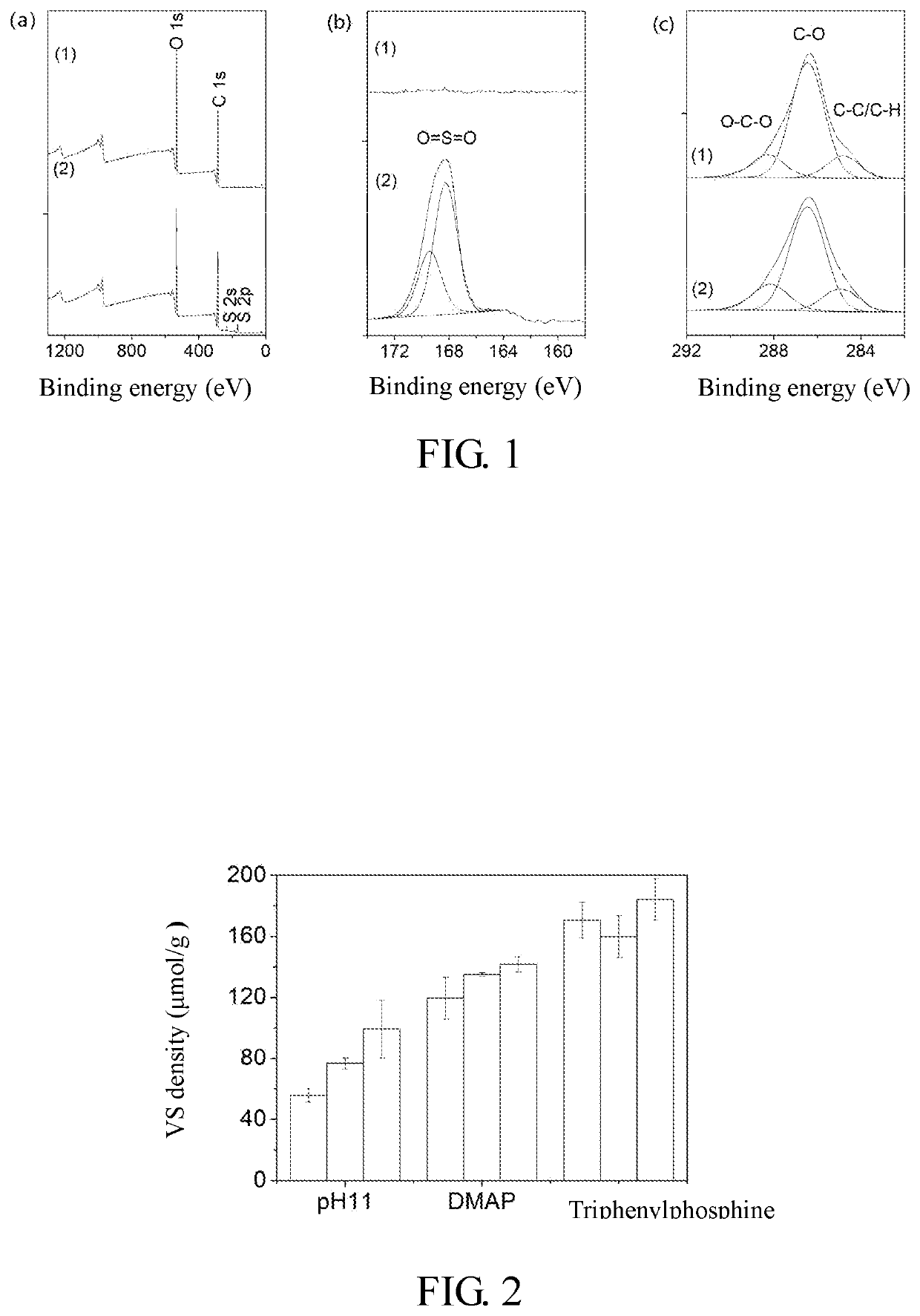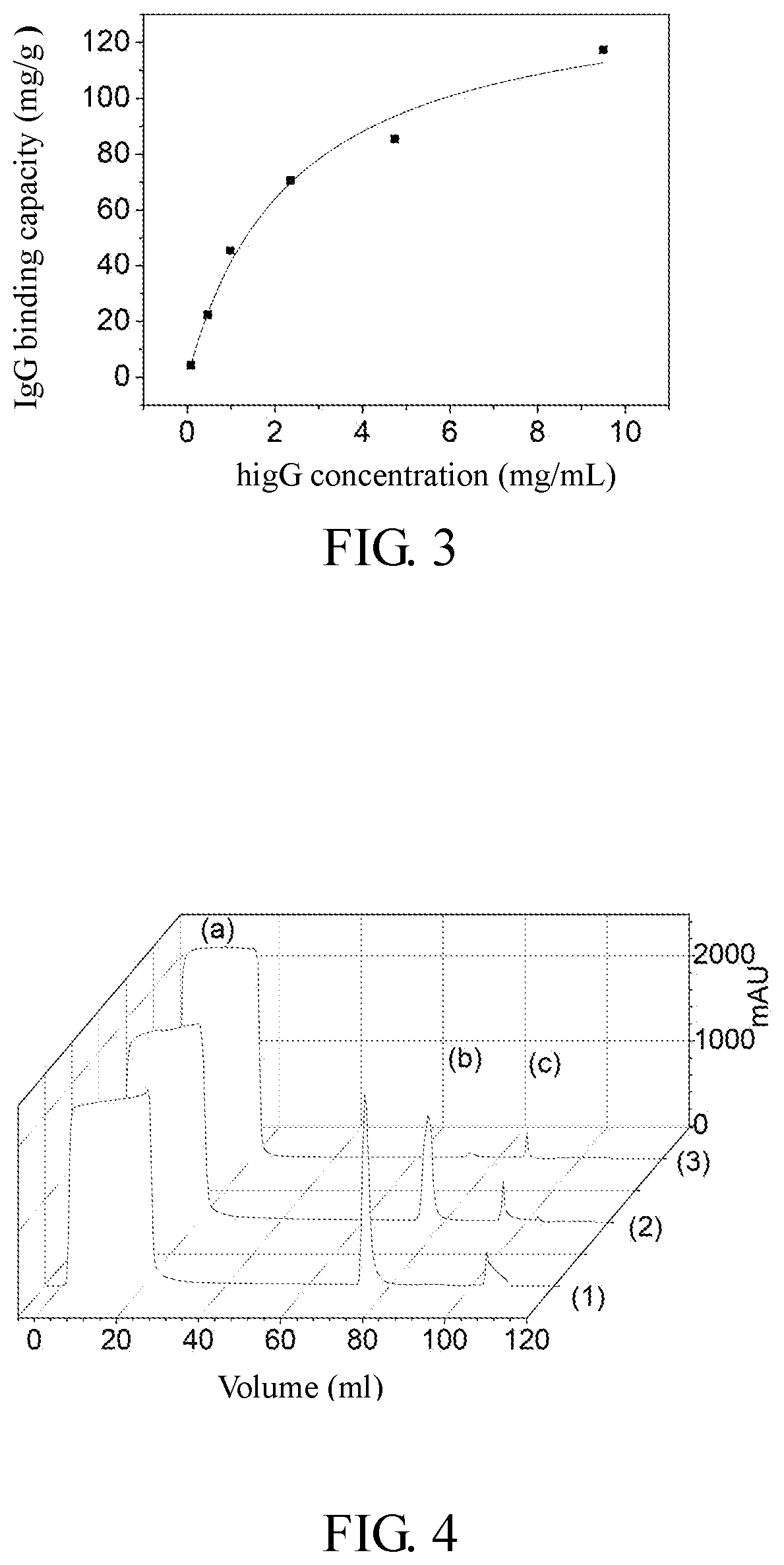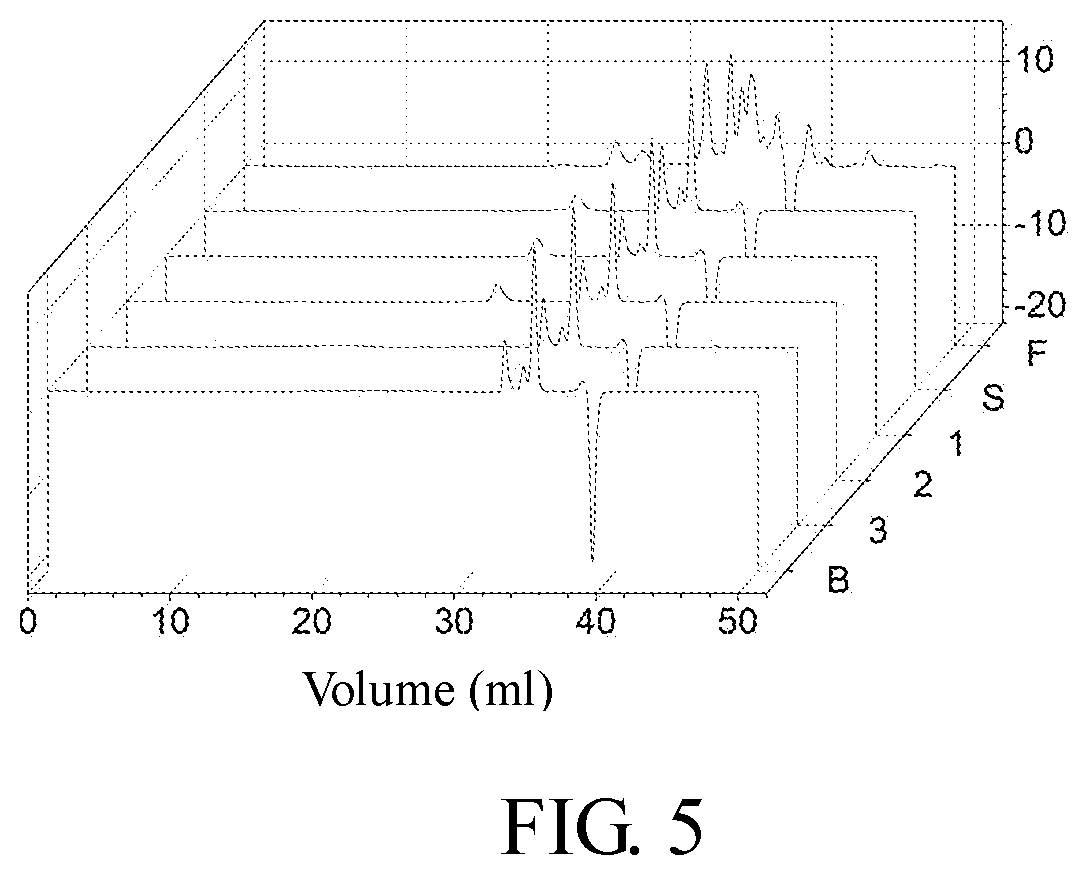Functionalized high-density chromatography matrix, preparation method and application thereof
a chromatography matrix and high-density technology, applied in the field of chromatographic material preparation, can solve the problems of poor atom economy, uncontrollable reaction, restrict the improvement of adsorption capacity and adsorption specificity of chromatography matrix, etc., and achieve high reaction efficiency, high reaction efficiency, and different catalytic efficiency
- Summary
- Abstract
- Description
- Claims
- Application Information
AI Technical Summary
Benefits of technology
Problems solved by technology
Method used
Image
Examples
embodiment 1
[0030]0.3 g of agarose resin was taken (Bastarose 6FF: highly crosslinked 6% agarose, average particle size 90 μm; Bestchrom Biosciences Co., Ltd.), and suction filtered and thoroughly washed with acetonitrile to remove water, then 1 mL of 10% (v / v) divinyl sulfone in acetonitrile solution containing 4-dimethylaminopyridine was added, wherein the molar ratio of 4-dimethylaminopyridine to divinyl sulfone was 1:10, and reacted for 12 h at 25° C. After reaction, the solution was suction filtered and washed with acetonitrile to thoroughly remove divinyl sulfone and catalyst residue, to obtain a VS functionalized agarose resin.
[0031]In the control group, 0.3 g of agarose resin was added to 1 mL of carbonate buffer (0.5 M, pH 11), the carbonate buffer contains 10% (v / v) divinyl sulfone and 10% acetone, and reacted at 25° C. for 12 h. After reaction, the solution was suction filtered and washed with acetonitrile to thoroughly remove the divinyl sulfone residue. A certain amount of the func...
embodiment 2
[0032]0.3 g of agarose resin was taken (Bastarose 6FF: highly crosslinked 6% agarose, average particle size 90 μm; Bestchrom Biosciences Co., Ltd.), and suction filtered and thoroughly washed with acetonitrile to remove water, then 1 mL of 10% (v / v) divinyl sulfone in acetonitrile solution containing triphenylphosphine was added, wherein the molar ratio of triphenylphosphine to divinyl sulfone was 1:10, and reacted for 1 h at 25° C. After reaction, the solution was suction filtered and washed with acetonitrile to thoroughly remove divinyl sulfone and catalyst residue, to obtain a VS functionalized agarose resin.
[0033]In the control group, 0.3 g of agarose resin was added to 1 mL of carbonate buffer (0.5 M, pH 11), the carbonate buffer contains 10% (v / v) divinyl sulfone and 10% acetone, and reacted at 25° C. for 12 h. After reaction, the solution was suction filtered and washed with acetonitrile to thoroughly remove the divinyl sulfone residue. A certain amount of the functionalized ...
embodiment 3
[0034]0.3 g of agarose resin was taken (Bastarose 6FF: highly crosslinked 6% agarose, average particle size 90 μm; Bestchrom Biosciences Co., Ltd.) and suction filtered and thoroughly washed with acetonitrile to remove water, then 1 mL of 10% (v / v) divinyl sulfone in acetonitrile solution containing triphenylphosphine was added, wherein the molar ratio of triphenylphosphine to divinyl sulfone was 1:10, and reacted for 2 h at 25° C. After reaction, the solution was suction filtered and washed with acetonitrile to thoroughly remove divinyl sulfone and catalyst residue, to obtain a VS functionalized agarose resin.
[0035]In the control group, 0.3 g of agarose resin was added to 1 mL of carbonate buffer (0.5 M, pH 11), the carbonate buffer contains 10% (v / v) divinyl sulfone and 10% acetone, and reacted at 25° C. for 12 h. After reaction, the solution was suction filtered and washed with acetonitrile to thoroughly remove the divinyl sulfone residue. A certain amount of the functionalized a...
PUM
| Property | Measurement | Unit |
|---|---|---|
| reaction temperature | aaaaa | aaaaa |
| temperature | aaaaa | aaaaa |
| temperature | aaaaa | aaaaa |
Abstract
Description
Claims
Application Information
 Login to View More
Login to View More - R&D
- Intellectual Property
- Life Sciences
- Materials
- Tech Scout
- Unparalleled Data Quality
- Higher Quality Content
- 60% Fewer Hallucinations
Browse by: Latest US Patents, China's latest patents, Technical Efficacy Thesaurus, Application Domain, Technology Topic, Popular Technical Reports.
© 2025 PatSnap. All rights reserved.Legal|Privacy policy|Modern Slavery Act Transparency Statement|Sitemap|About US| Contact US: help@patsnap.com



